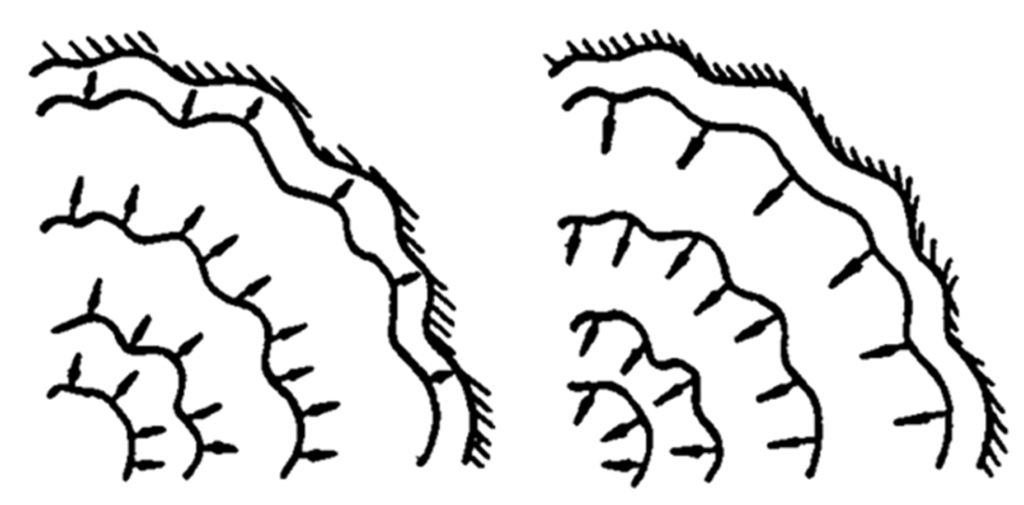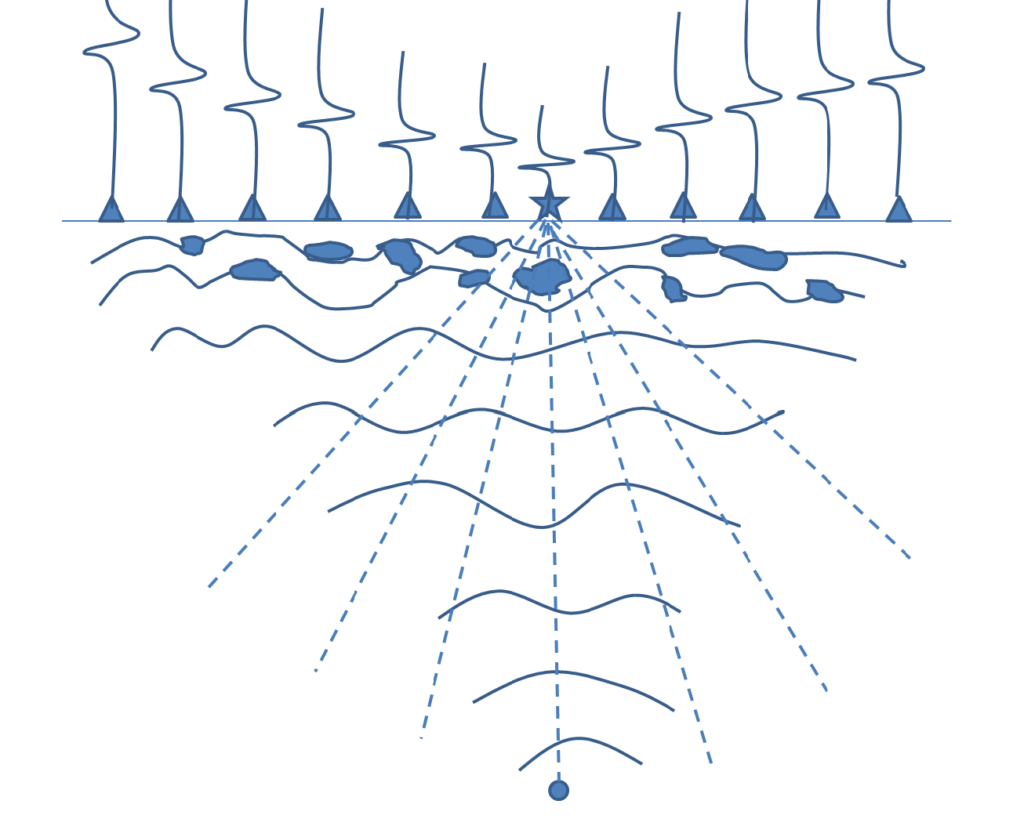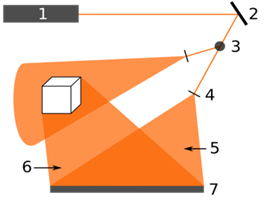Essence of the RTH Approach
The essence of the RTH method — Reverse Time Holography is the numerical implementation for the seismic of the physical effect of the “reversing mirror” open for laser, B.Ya. Zeldovich (Lebedev Physical Institute of the USSR) in 1972. Implementation is based on the theory of conjugate equations.
Unlike a conventional reflecting mirror, in which ordering of reflections in time is performed (the pulse that arrived first — is reflected first), the optical or wavefront, after interacting with a «reversing mirror», turns in time (Reverse Time: first came — last reflected).

Figure 1. Reversing mirror
Moreover, the time-reversed wave front reflected from the reversing mirror “remembers” the turbulence or inhomogeneity of the medium through which the wave passed before reaching the reversing mirror and, when passing through the same medium in the opposite direction, the reversed wavefront is self-correcting, that is, it is cleared from these primary distortions – Fig.1.
In the case when the primary seismic wave field incident on the “reversing mirror” was already scattered by the inhomogeneity of the geological medium during its primary passage, after reversal and passage through the inhomogeneous medium in the opposite direction, the undistorted corrected wave field will be precisely focused at the points of primary scattering. In seismic, such a primary scattered wave field is generated by backscattering of the medium from a wave generated by a source located on the surface of the Earth.

Figure 2.
The focusing process in space and time in the RTH method is fixed using the interferometry method, which is used in holography for the spatial interaction of two waves: reference and scattered — Fig.3.

Figure 3. Two-beam interferometry
The role of the holographic photographic plate in the RTH method is performed by the Vector Domain Common Image Gather –VDCIG digital storage of 4-dimensional data, which stores all the amplitude and phase information about the time-reversed seismic wave scattered through the inhomogeneities of the medium.

Figure 4. Vector Domain Common Image Gather
Improving the accuracy of information in VDCIG is ensured by multiple generation of the seismic process at various points on the Earth’s surface. The formation of the VDCIG data repository in the RTH method is similar to the procedure of the full spatio-temporal “decomposition” of a scattered wave.
Evaluation of the properties of the heterogeneous medium (velocity, impedance, reflectivity, scattering indicatrix, etc.) based on VDCIG data is the essence of the second stage of RTH, the “synthesis” stage.
